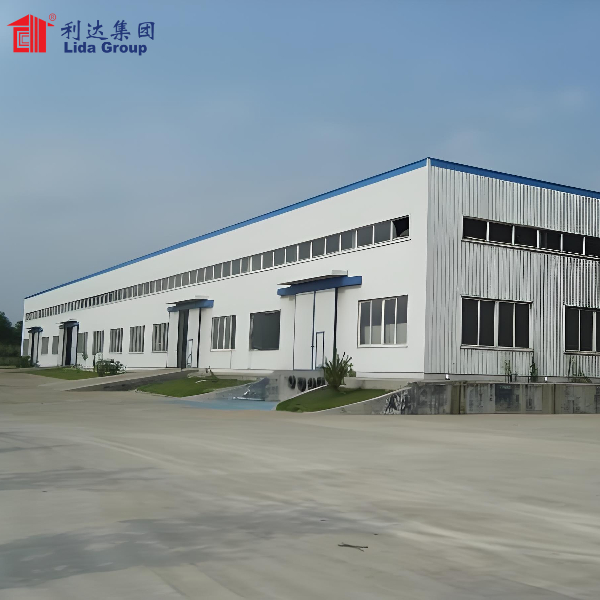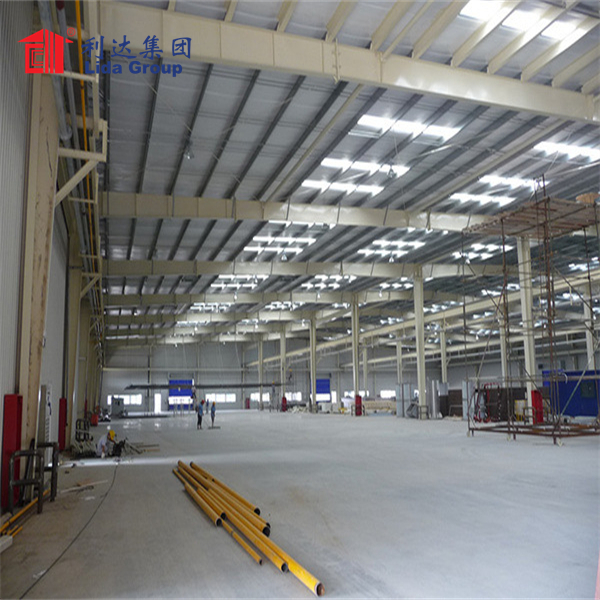Introduction
Lida Group has emerged as a leading provider of steel structure warehouses, offering sustainable solutions that prioritize environmental responsibility. With a focus on energy efficiency, durability, and eco-friendly practices, Lida Group has revolutionized the warehousing industry by integrating sustainable features into their steel structures. In this article, we will explore how Lida Group creates sustainable solutions with their steel structure warehouses, the environmental benefits they offer, and their impact on the industry.
- Sustainable Design Principles
a. Efficient Space Utilization: Lida Group’s steel structure warehouses are designed to optimize space utilization. By incorporating innovative storage solutions such as mezzanine floors, vertical racking systems, and automated retrieval systems, Lida Group maximizes storage capacity while minimizing the building’s footprint. This efficient use of space reduces land requirements and promotes sustainable land management practices.
b. Energy-Efficient Lighting: Lida Group integrates energy-efficient lighting systems into their warehouses, utilizing technologies such as LED (light-emitting diode) lighting. LED lights consume significantly less energy than traditional lighting sources, resulting in reduced energy costs and lower environmental impact. Lida Group also incorporates lighting controls and motion sensors to ensure lights are only activated when needed, further optimizing energy efficiency.
c. Natural Ventilation and Daylighting: Lida Group prioritizes natural ventilation and daylighting in their warehouse designs. By strategically placing windows, skylights, and ventilation systems, they harness natural airflow and sunlight to reduce the need for artificial lighting and mechanical ventilation. This approach not only minimizes energy consumption but also improves indoor air quality and occupant comfort.
d. Insulation and Thermal Efficiency: Lida Group emphasizes thermal insulation in their steel structure warehouses to minimize heat transfer. High-quality insulation materials, such as expanded polystyrene (EPS) or polyurethane (PU) foam, are used to create a thermal barrier, reducing the need for heating and cooling systems. Proper insulation ensures a stable indoor temperature, reduces energy consumption, and enhances overall energy efficiency.
- Sustainable Materials and Construction
a. Steel as a Sustainable Material: Lida Group’s steel structure warehouses are constructed using steel, which is a highly sustainable material. Steel is recyclable and can be reused multiple times without losing its properties. By utilizing steel, Lida Group reduces the demand for virgin materials and minimizes waste generation. Additionally, steel structures are durable, requiring less maintenance and repairs over their lifespan.
b. Prefabrication and Modular Construction: Lida Group employs prefabrication and modular construction techniques in their warehouse projects. Prefabrication involves manufacturing components off-site, which reduces construction waste and minimizes environmental disruption. Modular construction allows for efficient assembly and disassembly, enabling warehouses to be relocated or expanded with ease. These practices promote resource efficiency and enhance the overall sustainability of the projects.
c. Water Conservation: Lida Group integrates water-conserving features into their warehouse designs. This includes the installation of rainwater harvesting systems, which collect and store rainwater for non-potable uses such as irrigation or toilet flushing. By reducing reliance on freshwater sources, Lida Group contributes to water conservation efforts and minimizes the strain on local water supplies.
- Environmental Benefits
a. Reduced Carbon Footprint: Lida Group’s sustainable steel structure warehouses significantly reduce carbon emissions compared to traditional warehouses. Through energy-efficient designs, renewable energy integration, and the use of recycled materials, these warehouses minimize environmental impact and contribute to mitigating climate change.
b. Lower Operational Costs: Lida Group’s sustainable solutions offer long-term financial benefits to warehouse owners. By incorporating energy-efficient features, such as lighting systems and insulation, warehouses can reduce energy consumption and lower operational costs. Additionally, the durability of steel structures reduces maintenance and repair expenses over time.
c. Waste Reduction: Lida Group’s emphasis on prefabrication and modular construction techniques minimizes construction waste generation. By optimizing material usage and recycling steel components, they reduce landfill waste and promote sustainable waste management practices. This waste reduction approach aligns with the principles of the circular economy, where resources are used efficiently and waste is minimized.
d. Positive Impact on Local Communities: Lida Group’s sustainable warehouses contribute to the well-being of local communities. By reducing energy consumption and carbon emissions, these warehouses improve air quality and reduce environmental pollution. Additionally, the use of sustainable materials and construction practices promotes eco-friendly development and sets an example for responsible construction in the region.
- Lida Group’s Commitment to Sustainability
a. Research and Development: Lida Group invests in research and development to continuously improve their sustainable solutions. They stay abreast of the latest advancements in energy-efficient technologies, green building practices, and sustainable materials. Lida Group’s commitment to innovation ensures that their steel structure warehouses remain at the forefront of sustainable construction.
b. Collaboration and Partnerships: Lida Group collaborates with industry experts, architects, engineers, and suppliers to foster innovation and develop sustainable solutions. By partnering with organizations that share their commitment to sustainability, Lida Group expands their knowledgebase and strengthens their ability to deliver cutting-edge sustainable warehouse solutions.
c. Education and Awareness: Lida Group actively promotes education and awareness regarding sustainable warehousing practices. They provide resources, training programs, and seminars to clients, employees, and the wider community. By sharing their expertise and knowledge, Lida Group aims to inspire others to adopt sustainable practices and contribute to a greener future.
Conclusion
Lida Group’s steel structure warehouses are leading the way in creating sustainable solutions for the warehousing industry. Through their focus on sustainable design principles, the use of energy-efficient lighting, natural ventilation, and thermal insulation, Lida Group ensures that their warehouses are environmentally responsible. By utilizing sustainable materials, employing prefabrication and modular construction techniques, and incorporating water conservation measures, Lida Group reduces the carbon footprint and operational costs of their warehouses. These sustainable practices not only benefit the environment but also contribute to the well-being of local communities and offer long-term financial advantages. Lida Group’s commitment to sustainability and their innovative approach to warehouse construction sets a new standard for the industry, demonstrating that it is possible to create efficient and eco-friendly warehousing solutions.
Post time: May-27-2024


